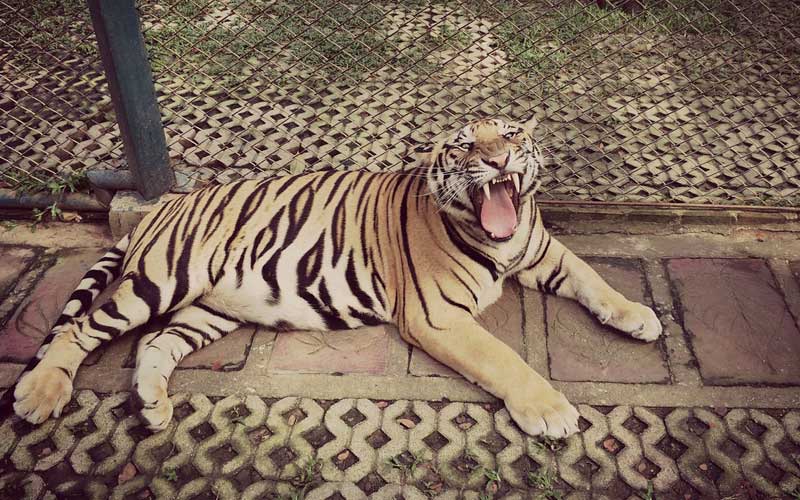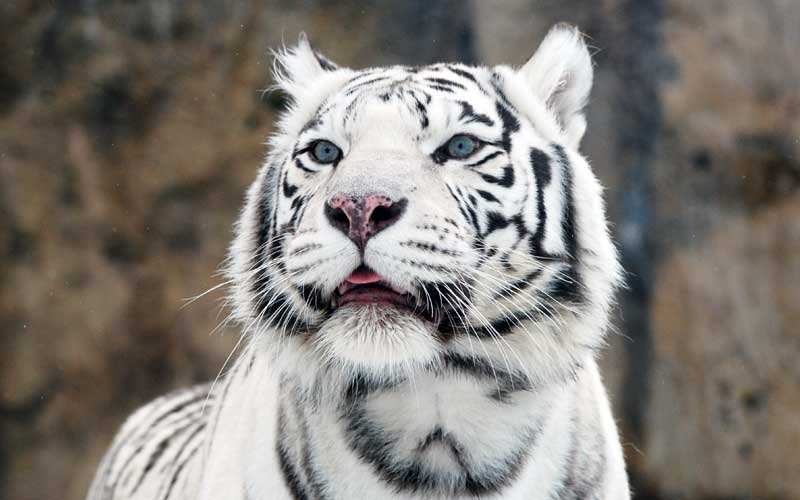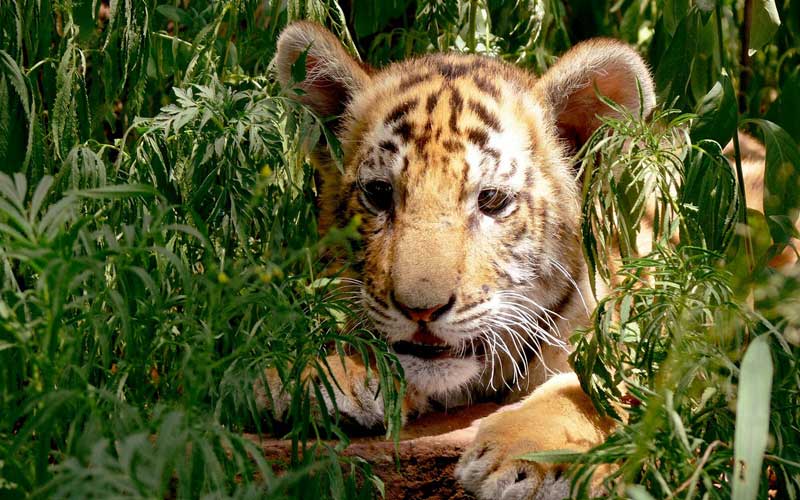What is captivity?
It is a condition that implies the constraint of Tigers and their controlled maintenance. Keepers should provide feeding, cleaning and medically treatment according to established regulations and occasionally, their reproduction may be induced or artificially made.
The confinement of animals is a very disputable and often controversial condition. A large number of conservationists advocate the end of animals behind bars and their use in shows detrimental to their health.
All of the above refers to captivity in legitimate parks and zoos. However, many people dare to have tigers in their homes, knowing that they are animals that require a lot of space to live and many other needs. Some time ago it was discovered that more captive tigers live in the United States than in the wild in their natural distribution range. What’s going on?
It is clear that Tigers are beautiful and imposing animals, which are a symbol of strength and power in many cultures. That is why some people wish to own an “exotic” pet like a tiger.
The South China tiger only exists in captivity, since for more than 25 years nobody has seen a specimen in the wild.
Having tigers in captivity is not a recent practice, of course not. In ancient Rome they were used to entertain society by fighting with other large animals, especially lions (even against humans), so the Romans had to lock them up to avoid their escape, to train them and expose them to the public. In the seventeenth century, they began to be part of the group of animals that the wealthy owners of castles maintained as a symbol of power.
The captivity in zoos is a little more recent, dating to the eighteenth century. These establishments justify their existence for the sake of conservation, education, research, and recreation. Although many people argument against parks and zoos, as a large number of tigers, are captive in them. In fact, the South China tiger (Panthera tigris amoyensis) only exists in captivity, since for more than 25 years nobody has seen a specimen in the wild, reason why it is considered to be functionally extinct.
ADVANTAGES
– Thousands of Tigers currently captive dodge the dangers they face in the wild due to poaching or other threats. In the case of the South China tiger, captivity has been the only way to preserve the species.
– Some zoos manage programs to improve the quality of life of tigers and raise the number of individuals.
– Other zoos work in close collaboration with conservation organizations to help some species. For example, the Conservation Fund supports several preservation projects through educational programs for habitat protection, research, and conservation.
– According to a study co-written by Dr. Shu-Jin Luo, some captive tigers could play an essential role in the survival of those in the wild. Given that many of these tigers have “purebred ancestors,” a genetic assessment on specimens of unknown lineage would increase the number of pure-blooded individuals that could be useful for the conservation of wild populations.

DISADVANTAGES
– It is common that captive tigers develop abnormal behaviors because of the limited space where they live and the continuous contact with humans. Enclosed and confined to a small area they cannot do what they usually do in the wild: run, swim, climb trees, hunt, and so on. Animals can be victims of stress, which can result in physical and psychological suffering.
– Tigers experience a deterioration in the performance of their natural instincts.
Tigers in captivity
Tiger in Zoo
– In captivity, breeding of white tigers by inbreeding can lead to losing genetic variability generating ill offspring.
– Their maintenance is expensive because of the facility that houses them, the food, medical care, and additional materials.
– Zoo or park personnel can provide physical or psychological mistreatment for a long time before anyone knows.
The truth is that Tigers have had to survive in captivity because of hunting, poaching, the loss of their habitat and other anthropogenic threats. The question is: keeping tigers in captivity is always bad?
It is evident that the ideal condition for any species is its natural habitat. Tigers are born free. Efforts to eradicate the dangers they face are necessary so that they can go back to where they belong.
There are about 10,000 tigers in captivity all over the world.
TIGERS AS PETS
Some conservationists estimate that there are about 10,000 tigers in captivity all over the world. Besides being extremely dangerous as they are wild animals, it doesn’t take long before they are full grown animals that need a lot of care and resources to survive.
In China, approximately 4,500 tigers of different species are living in captivity. Most of them are in breeding programs that helps to keep the genetics of these animals as safe as possible. The goal is to prevent those animals that are too closely related to each other from breeding.
Tigers breed well in captivity; therefore, efforts in this way have been made to help increase their population. Since less than half of the cubs survive in the wild, there are proper techniques in place to help ensure their survival in captivity. Some of the tiger cubs are removed from their mothers and cared by humans to ensure they get adequate nutrition and even medical care that may be necessary.
TIGERS IN REFUGEES
Some of them are rescued and kept in captivity while they heal when volunteers find them injured in the wild. Otherwise, they would die. In some cases, they are healthy and recovered after medical care so that they can return to their natural habitat, but some others need to stay because they are not able to return.
References
http://animals.sandiegozoo.org/animals/tiger
Wild Cats of the World. Mel Sunquist, Fiona Sunquist. University of Chicago Press, 2002.
https://www.worldwildlife.org/magazine/issues/winter-2016/articles/captive-tigers-in-the-us
http://www.carnivoreconservation.org/files/thesis/pitsko_2003_msc.pdf




